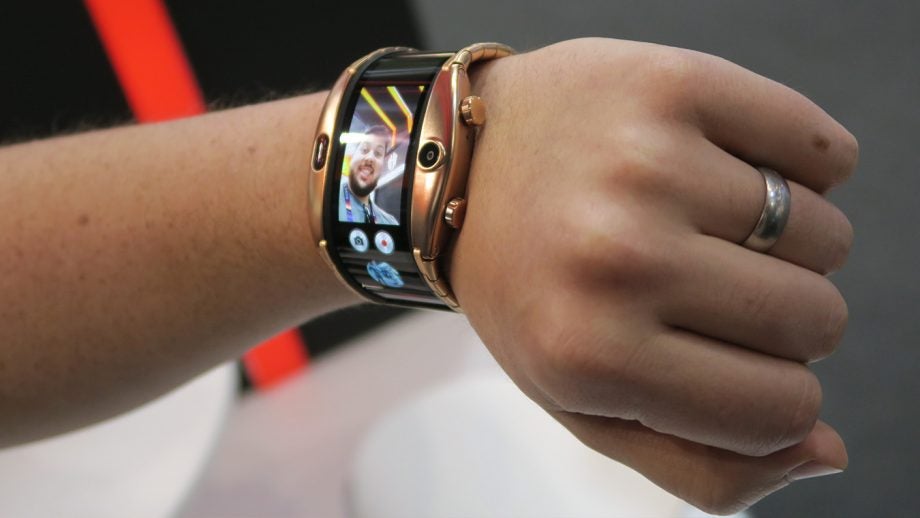Opinion: Forget the Razr and Galaxy Z Flip, folding smartwatches are the future

This week the headlines have been all about Motorola’s new, and oh so expensive, Razr and Samsung’s hotly rumoured Galaxy Z Flip. But, for me, neither will be the device that makes foldables a mainstream item for one key reason – they’re both phones, not smartwatches.
This may sound silly given that, as it stands, smartwatch penetration isn’t anywhere near as high as phones. If you look at Strategy Analytics latest report, shipments in Q3 last year only just broke 14 million, which is minuscule compared to the 350 million phone shipments reported during the same period.
For me, the argument’s simple – foldable designs don’t work. Whether it’s the folding clamshell form-factor seen on the Razr or the tablet-come-phone design sported by Samsung’s foldables, every current foldable form is plagued with design issues.
Just look at the teething pains that plagued the original Galaxy Fold – displays breaking apart in reviewers’ hands, seams appearing on those that didn’t break and, even if they then worked, awkward screen aspect ratios that made most apps look terrible. We haven’t reviewed it yet, but if the “care” guidance issued by Motorola is anything to go by, the Razr screen isn’t exactly low maintenance either.
This is why I think the best use of a folding screen is on wearables, not tablets-come-smartphones. If you think about it becomes obvious that the tech will work better in a watch form-factor on so many levels.
First off, it’s not a new idea. We’ve seen rumours about everything from snap-design folding smartwatches from Samsung – where the long screen would wrap around users wrists like a bangle – to bizarre fold out concepts from business powerhouse IBM, for years.
Related: Best smartwatches 2020
Last MWC we also saw Nubia take an opening, albeit misguided, stab at making a foldable wearable with the Apha. Because of this, we know companies are, at the very least, interested in using the tech in wearables.
Secondly, the design would actually serve a purpose. Wearables are great, but a watch form factor is pretty limiting when it comes to screen size if it’s made flat.
If you go too big then the watch face looks comically large and, in our experience, makes the device fairly uncomfortable to wear. This is why Apple hasn’t radically changed its watch’s form factor, despite the obvious benefits a larger screen offers – the ability to read emails and messages and check maps more easily, for example.
A wrap around folding screen, would let you load the watch with a larger screen that curves to a wrists natural contour, improving the wearable’s functionality without damaging its fit.
Thirdly and finally, the design would be less taxing on the screen. Current foldables focus on having screens that fully fold flat. It’s this crux that makes them so delicate and generally causes problems, with most issues stemming from the “seam” where the actual folding process occurs. On most of the concepts we’ve seen, the design is a lot less demanding, simply requiring it to curve, rather than fold flat on itself.
There will, of course, be some roadblocks to get past with folding smartwatches – which is why the latest research from analyst house Counterpoint pegs the tech as being around 5 years away from being ‘mainstream’. However, for those three reasons, I can still see folding smartwatches being a common site on most high streets faster than foldable phones will.
Hopefully I’ll be proven right and at MWC 2020 (Mobile World Congress) next month we’ll see yet more awesome early pioneers, like the Nubia Alpha, appear and start paving the way for next-generation folding wearables.


